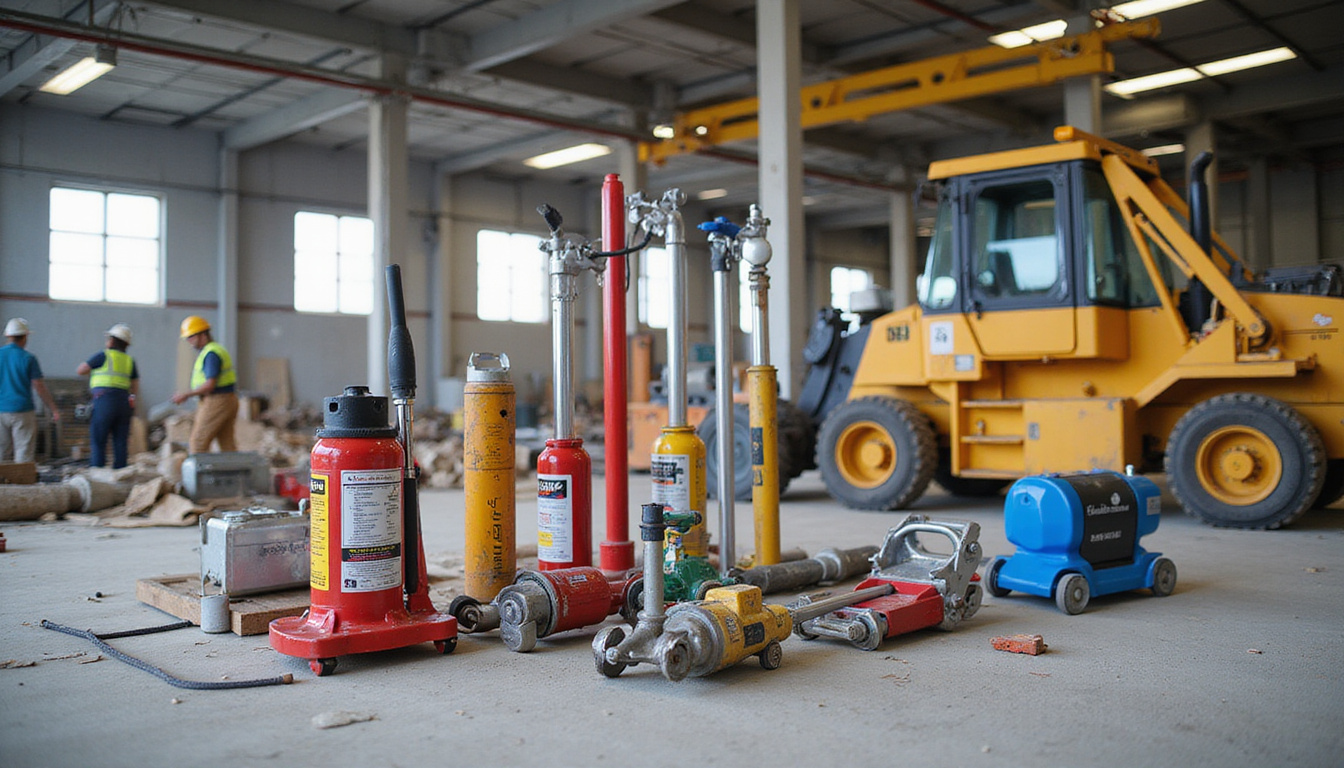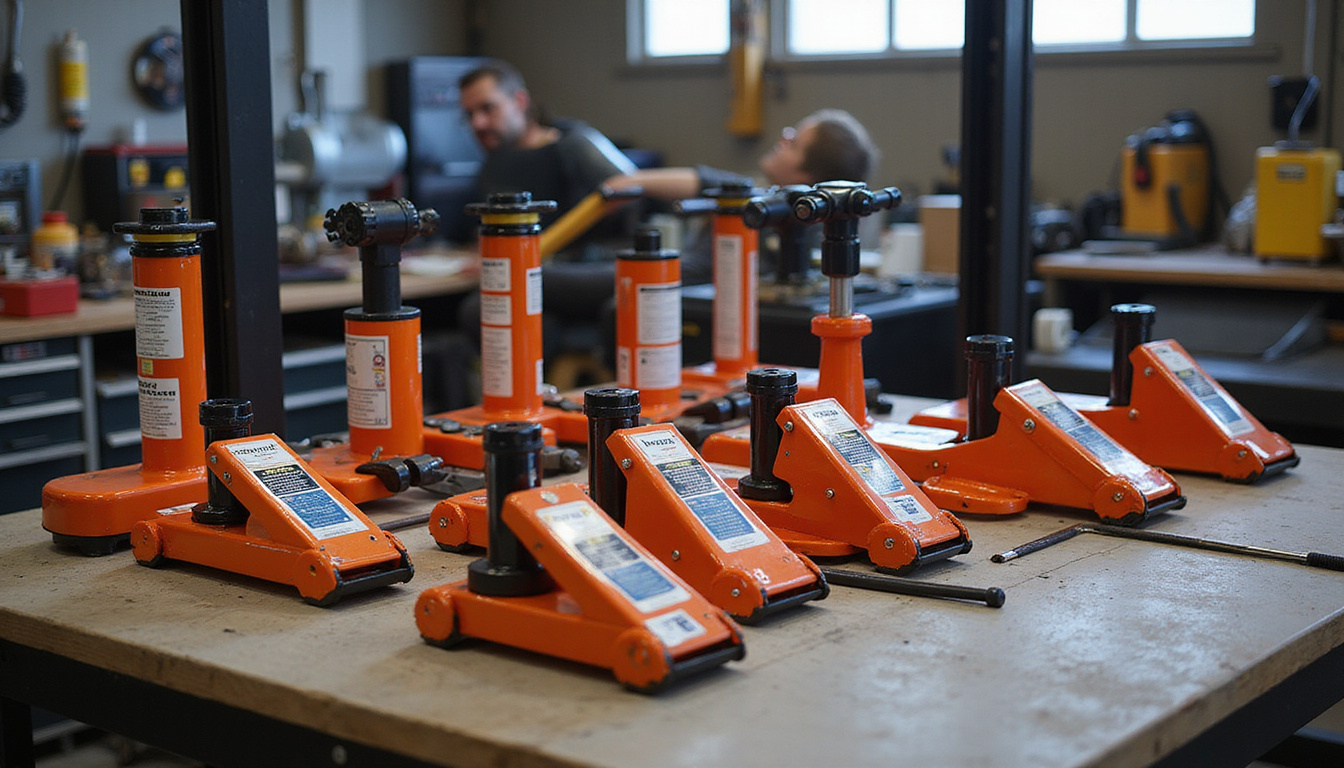Maximize Your Efficiency: The Essential Guide to Hydraulic Tools for Every Project

Have you ever faced a challenging project and wished for an extra boost of power? Enter hydraulic tools—the unsung heroes of efficiency that can take your work to the next level! In the world of construction, automotive, and heavy machinery, these tools harness the power of hydraulics to make tough jobs feel effortless. Whether you're lifting, pushing, or pulling, the right hydraulic tool can make all the difference. In this essential guide, we’ll explore the various types of hydraulic tools, their applications, and how to choose the best one for your specific needs. Plus, we’ll cover maintenance tips to keep your tools in top shape and important safety precautions to ensure a secure working environment. Get ready to maximize your efficiency!

Key Takeaways
- Hydraulic tools are essential for enhancing efficiency in various projects.
- Different types of hydraulic tools serve specific applications across industries.
- Using hydraulic tools can significantly improve productivity and reduce manual labor.
- Selecting the appropriate hydraulic tool is crucial for achieving optimal results.
- Regular maintenance and safety precautions are vital for the longevity and safe use of hydraulic tools.
Introduction to Hydraulic Tools: What You Need to Know
Hydraulic tools have transformed how we approach various tasks in construction, automotive repair, and other industries. Have you ever struggled to loosen a rusted bolt or cut through heavy materials? If so, you might find the solution in hydraulic technology! Utilizing the power of pressurized liquid, these tools offer unparalleled strength and efficiency, making even the toughest jobs feel manageable. From hydraulic jacks that lift massive loads to crimpers and cutters that tackle tough materials, knowing how these tools work and the types available can dramatically influence your workflow and outcomes. Let’s dive into the essentials of hydraulic tools and what you need to consider when selecting the right ones for your needs!
Types of Hydraulic Tools and Their Applications
Hydraulic tools have revolutionized the way we approach heavy-duty tasks across various industries, providing powerful solutions with minimal effort. Common types of hydraulic tools include hydraulic jacks, which are essential for lifting heavy loads with precision; hydraulic torque wrenches, commonly used in construction and maintenance to ensure bolts are fastened to the correct specifications; and hydraulic crimping tools, perfect for creating strong connections in electrical applications. Each of these tools employs hydraulic pressure to amplify force, enabling users to tackle tasks that would be impossible with manual tools alone. Additionally, hydraulic cutters streamline the process of cutting materials like steel and cables, making them indispensable in emergency rescue operations and industrial settings. Understanding the specific applications of these hydraulic tools can help professionals select the right equipment, ultimately enhancing safety and efficiency in their work.
'The secret of success is to be ready when your opportunity comes.' – Benjamin Disraeli
Benefits of Using Hydraulic Tools for Your Projects
When it comes to tackling heavy-duty projects, the benefits of using hydraulic tools are hard to overlook. These powerful instruments utilize pressurized fluid to generate immense force, making tasks like lifting, bending, or cutting significantly easier and more efficient. One of the primary advantages of hydraulic tools is their ability to handle large loads with minimal physical effort, allowing for greater productivity and reduced risk of injuries. Additionally, hydraulic tools often feature adjustable speed and power settings, providing versatility for various applications. Moreover, they tend to have a longer lifespan compared to traditional tools due to less wear and tear, offering a sustainable choice for professionals and DIY enthusiasts alike. Embracing hydraulic tools not only enhances performance but also elevates the overall quality of projects, ultimately leading to safer and more successful outcomes.

Choosing the Right Hydraulic Tool for Your Job
When it comes to getting the job done efficiently and safely, selecting the right hydraulic tools is crucial. Whether you’re tackling heavy machinery repairs, building construction, or automotive work, hydraulic tools provide the power and precision needed for high-performance tasks. Here are some considerations to keep in mind:
1. Type of Job: Different tasks require different hydraulic tools. For instance, if you’re lifting heavy equipment, a hydraulic jack would be ideal, while those needing to cut or crimp materials might opt for hydraulic cutters or crimping tools.
2. Weight and Portability: If you need to transport your tool frequently, consider the weight and portability of the device. Lightweight models or those with handles can make transportation much easier.
3. Pressure Ratings: Hydraulic tools are rated for specific pressure limits, typically measured in pounds per square inch (PSI). Make sure the tool can handle the pressure required for your tasks.
4. Quality and Durability: Invest in reputable brands known for their durability and quality. Look for tools made from robust materials that can withstand tough job site conditions.
5. Safety Features: Prioritize tools that come with safety features such as automatic shut-off, pressure relief valves, and ergonomic designs, which can prevent accidents and ensure operator safety.
In summary, carefully assessing your project's requirements and matching them with the right hydraulic tools can significantly enhance efficiency and effectiveness, ensuring you complete your job successfully.
Maintenance Tips for Longevity of Hydraulic Tools
To ensure your hydraulic tools remain efficient and durable, regular maintenance is essential. Start by checking the hydraulic fluid levels frequently; low fluid can lead to overheating and premature wear. Next, inspect hoses and fittings for any signs of leaks or damage—replace any worn parts immediately to prevent hazardous malfunctions. Cleaning the tool after each use is crucial; dirt and debris can affect performance and accelerate wear and tear. Additionally, be sure to lubricate moving parts as specified by the manufacturer to reduce friction and enhance longevity. Finally, store your hydraulic tools in a dry, climate-controlled environment to protect them from rust and other environmental damage. By following these maintenance tips, you can extend the life of your hydraulic tools and ensure they perform at their best for many years.
Frequently Asked Questions
What are hydraulic tools and how do they work?
Hydraulic tools are devices that use pressurized fluid to generate mechanical force, allowing users to perform heavy-duty tasks such as lifting, pushing, or bending materials. They work by converting hydraulic energy into mechanical energy, providing high levels of power with minimal effort.
What types of hydraulic tools are commonly used in projects?
Common types of hydraulic tools include hydraulic jacks, hydraulic presses, hydraulic wrenches, and hydraulic hammers. Each tool serves specific applications, from lifting heavy objects to fastening bolts and cutting materials.
What are the benefits of using hydraulic tools?
The benefits of using hydraulic tools include increased efficiency, reduced physical strain on the operator, precise control of force application, and the ability to perform tasks that would be impossible or unsafe with manual tools.
How do I choose the right hydraulic tool for my job?
To choose the right hydraulic tool, consider the specific task you need to perform, the weight or material you are working with, the available space, and the required power. Research and consult with professionals if needed to ensure you select the most effective tool for your project.
What maintenance tips should I follow for hydraulic tools?
To maintain hydraulic tools, regularly inspect for leaks, clean components after use, follow the manufacturer's maintenance guidelines, and ensure proper storage when not in use. Regular maintenance helps extend the life of the tools and ensures safe operation.

